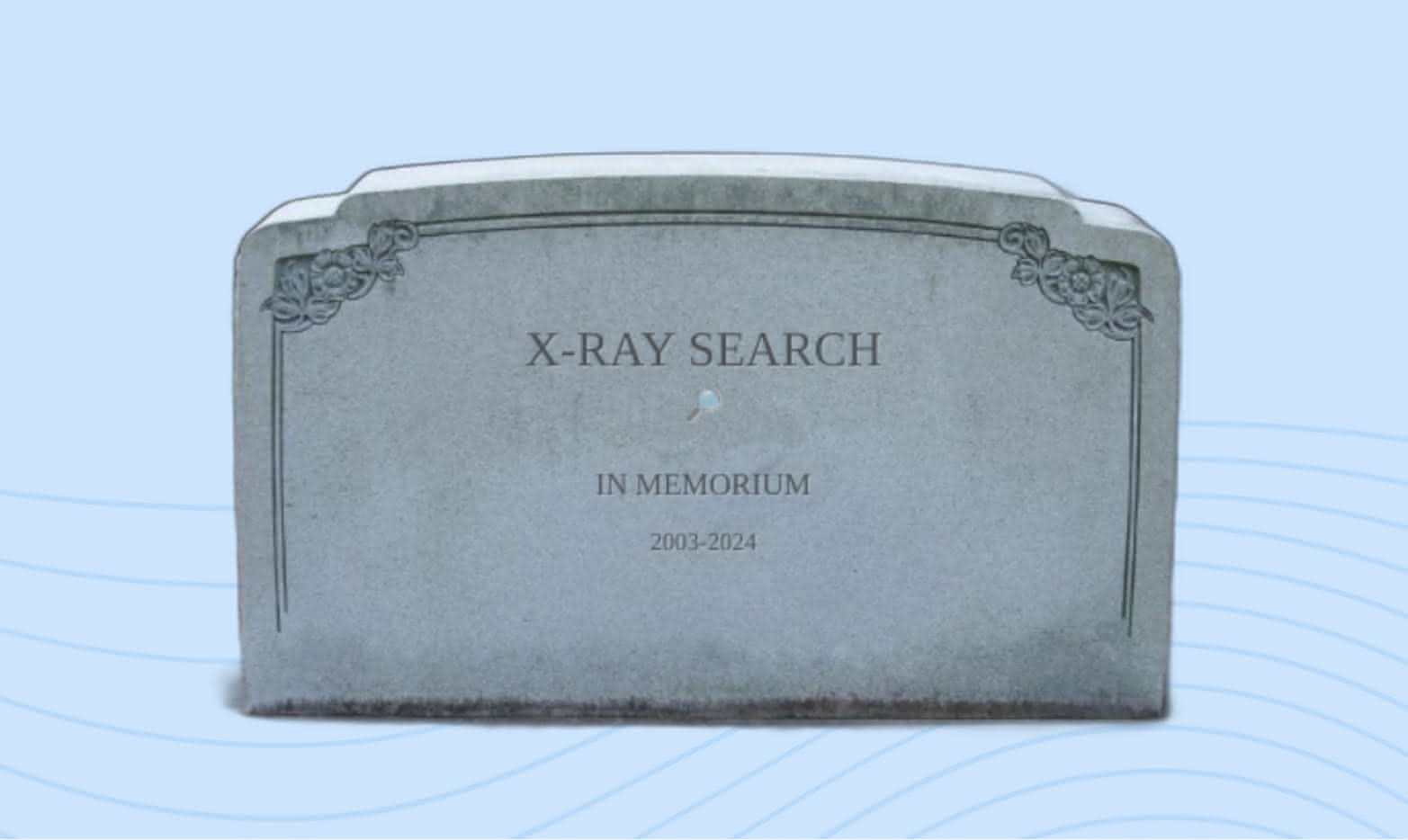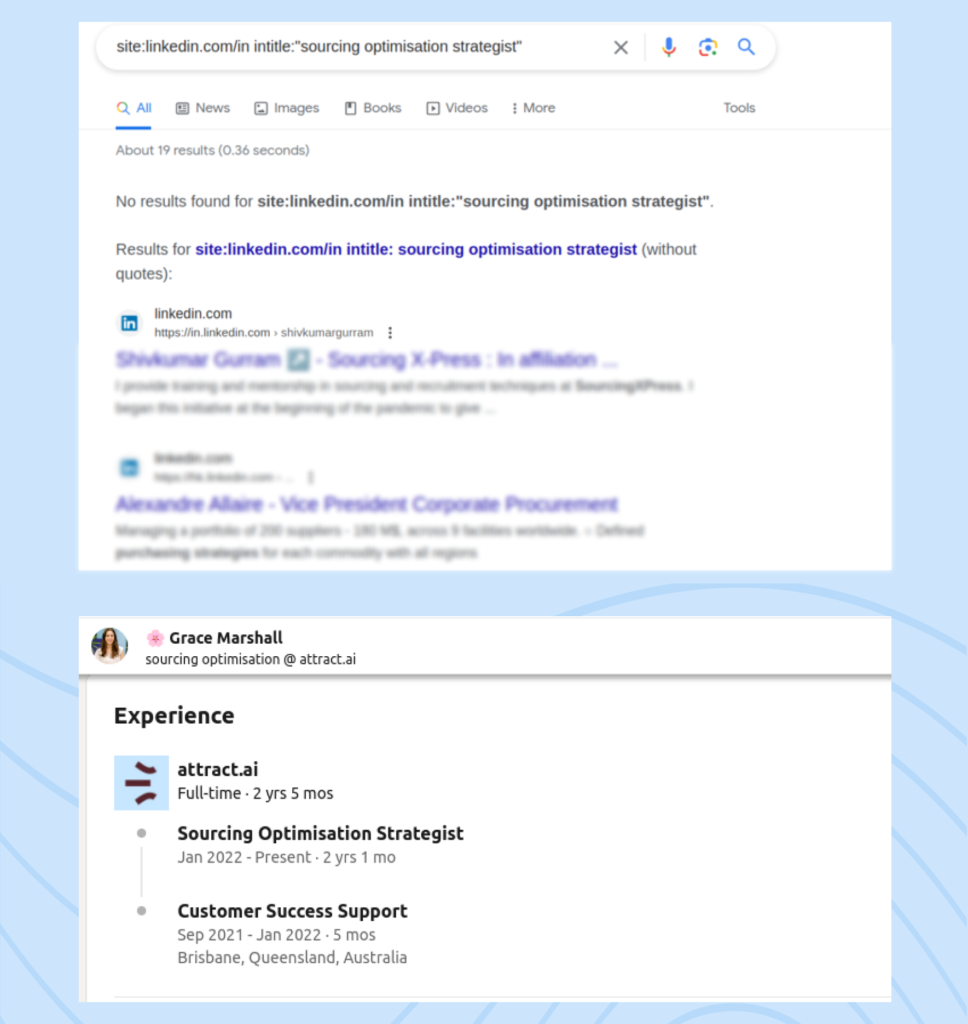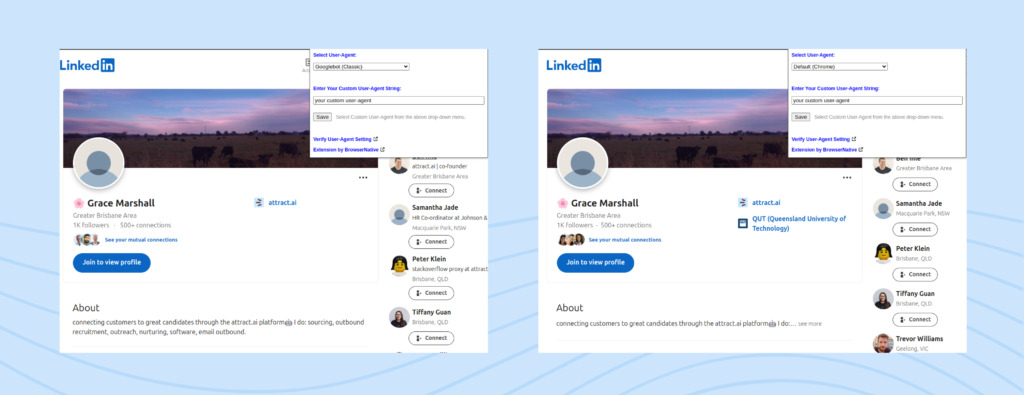In Memoriam: X-Ray Search
TL;DR: X-Ray search no longer provides accurate results for LinkedIn profiles.
Here’s what that means for the talent community.

What is it?
X-Ray Search is a popular method of searching for LinkedIn profiles without using LinkedIn’s internal search function, searching for terms using a search engine specifically across linkedin.
For example if you would like to search for Software Engineers in Brisbane a basic search would look like:
site:linkedin.com/in “software engineer” AND Brisbane.
Top-performing sourcing teams have long been building complex strings to target hard to reach pockets of talent. Sourcers get pretty crafty with their search strings by including ranges of geographies, open to work statuses and key skills.
What we found.
After hearing murmurs in the sourcing community suggesting a major shift in the information available on public LinkedIn profiles, we delved into some X-Ray searches ourselves.
We started by searching for some of our current employees:

After running additional searches, we noticed some even funkier behaviour…
Results were being returned for candidates who had not ever worked for attract.ai. So, what’s going on here?
As a result of LinkedIn’s recent changes – The information provided by LinkedIn on the public profile v.s. what is passed to Googlebot varies significantly. That is to say, LinkedIn provides Google different information compared to what you are able to see.

Similarly, the talent community is reporting that LinkedIn is pulling in old summary information and supplying this – individuals have reported searching for themselves and reading through summaries from 5-10 years ago.
LinkedIn has removed key parts of the profile from the public profile, resulting in a severe reduction of accuracy when running X-Ray search. Based on what we have seen – we would encourage you to run a few searches to see this for yourself.
What can we still see?
Our research suggests that profile information such as skills, experience, and job titles (key parts of most x-ray searches) will no longer be indexed and ranked within Google searches.
You are still (sometimes) able to see some matching terms from within the following profile areas:
- Recommendations and endorsements
- The first 30 words/160 chars of summaries — note that often people list skills near the end of their summary, which means they won’t be included
- Current company
- Certifications and volunteer experience
These updates mean that without the ability to share summaries or headlines in public profiles the only information individuals can now control in an x-ray search is their name and current company.
If you are relying on X-Ray search to uncover candidates, you will now be limited only to those who have specifically optimised their profile for these new changes. Generally, high-achieving employees will not be concerned with optimising their profiles for SEO.
This appears to be gradually rolling out as you are reading this, and we expect that in the near future it will be across all profiles as Google updates their indexes.
Luckily, this only affects those who are using publicly listed information to find profiles. If you’re using LinkedIn’s internal search you’ll be fine — many alternative sourcing tools (such as attract.ai) who rely on 3rd party data providers will also remain unaffected.
What are your options?
You have the choice to continue to re-enforce LinkedIn’s monopoly on recruiting data, or explore alternative tools.
For many recruiters, this move may be considered anti-competitive and a restriction of public data. Kevin D. Turner sums it up nicely – “It’s likely, this is by design, and a push to make more money. By blocking this info from being indexed by search engines, it forces more people to have to buy into Recruiter and Sales Navigator to find the right people. “
Although each sourcing platform is different, attract.ai’s AI Search offers significant advances in sourcing like iterative searches (where our AI learns what you’re looking for and presents you with fresh results), in-depth company and candidate insights (like gender breakdowns) and gives you access to an entire database (so you’re not limited to your network, especially useful when sourcing internationally).
If you’d like to learn more about our product, get in touch.